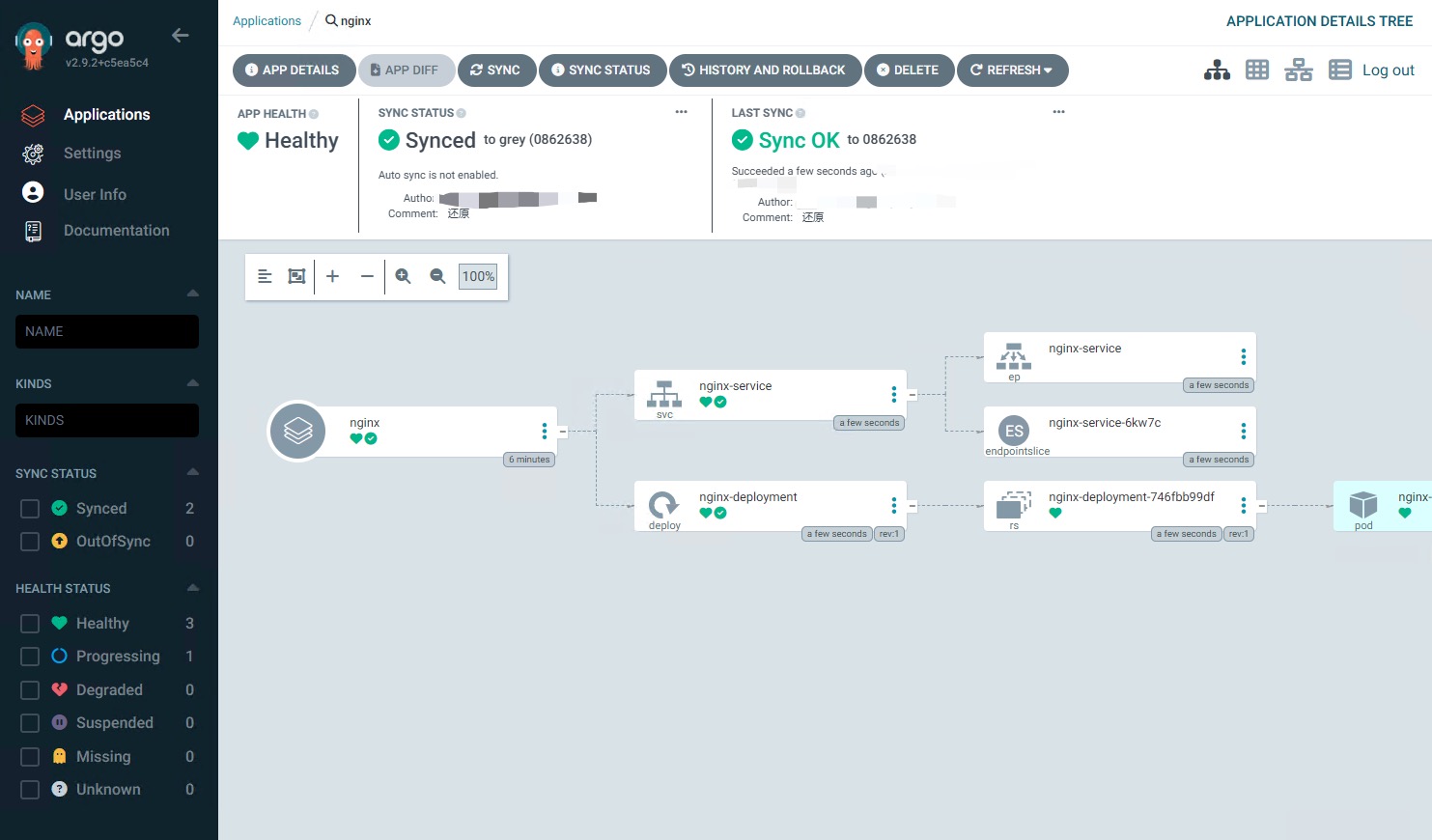argocd 安装和部署

Argo CD 是一个为 Kubernetes 而生的,遵循声明式 GitOps 理念的持续部署(CD)工具。Argo CD 可在 Git 存储库更改时自动同步和部署应用程序
在国内环境安装argocd
安装
前提:你已经安装好了 k8s 环境,我们将在国内的k8s环境下部署argocd
kubectl apply -n argocd -f https://github.jobcher.com/gh/https://raw.githubusercontent.com/argoproj/argo-cd/stable/manifests/install.yaml
检查是否正常部署
kubectl get po -n argocd

如果没有错误的情况下应该是全部都runnning,但是如果出现argocd-repo-server CrashLoopBackOff错误有以下解决途径:
- 使用以下补丁修补了部署。删除后,错误消失,repo 服务器可以启动。
apiVersion: apps/v1
kind: Deployment
metadata:
name: argocd-repo-server
spec:
template:
spec:
securityContext:
seccompProfile:
type: RuntimeDefault
如果出现argocd-dex-server imagepullbackoff错误有以下解决方法:
docker pull ghcr.io/dexidp/dex:v2.37.0
docker tag ghcr.io/dexidp/dex:v2.37.0 harbor/dexidp/dex:v2.37.0
docker push harbor/dexidp/adex:v2.37.0
使用自定义镜像
配置
暴露服务
默认情况下, Argo CD 服务不对外暴露服务,可以通过 LoadBalancer 或者 NodePort 类型的 Service、Ingress、Kubectl 端口转发等方式将 Argo CD 服务发布到 Kubernetes 集群外部。 通过 NodePort 服务的方式暴露 Argo CD 到集群外部
kubectl patch svc argocd-server -n argocd -p '{"spec": {"type": "NodePort"}}'
获取端口号
kubectl get svc -n argocd
获取 Argo CD 密码
默认情况下 admin
帐号的初始密码是自动生成的,会以明文的形式存储在 Argo CD 安装的命名空间argocd-initial-admin-secret 的 Secret对象下的 password
kubectl -n argocd get secret \
argocd-initial-admin-secret \
-o jsonpath="{.data.password}" | base64 -d
进入UI界面配置
输入地址: 例如:https://10.10.1.1:31751,输入用户名admin和密码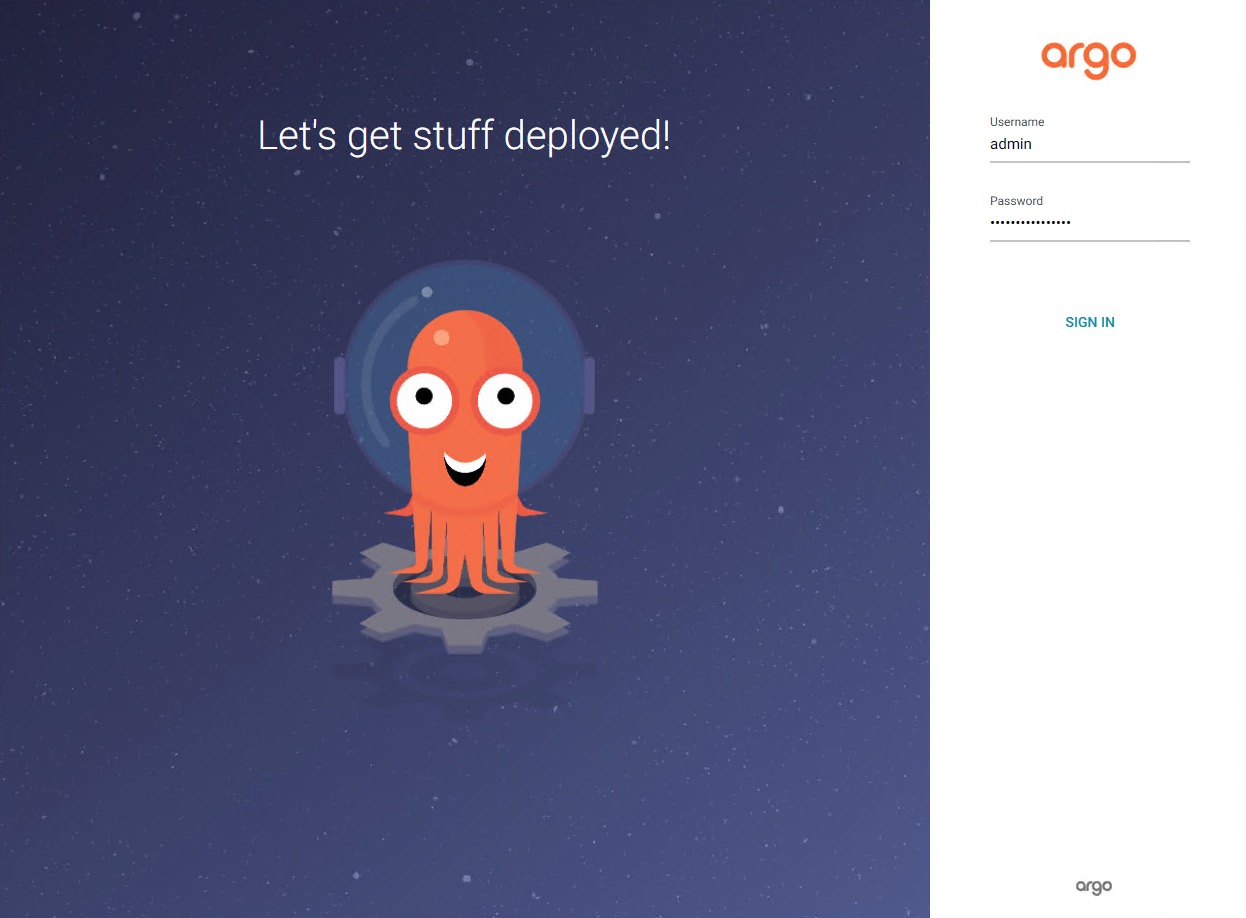
因为我是私有化仓库部署所以要配置私有化gitlab仓库
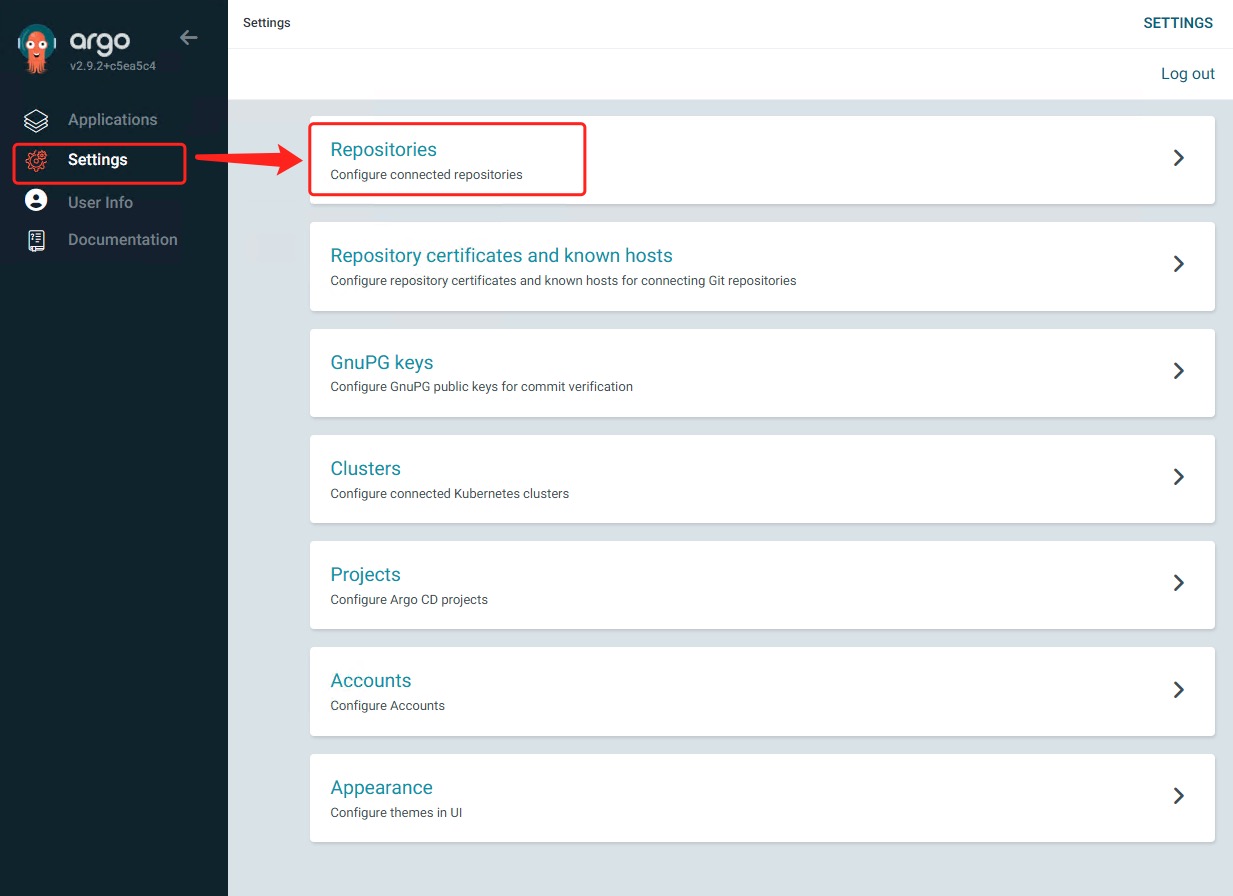
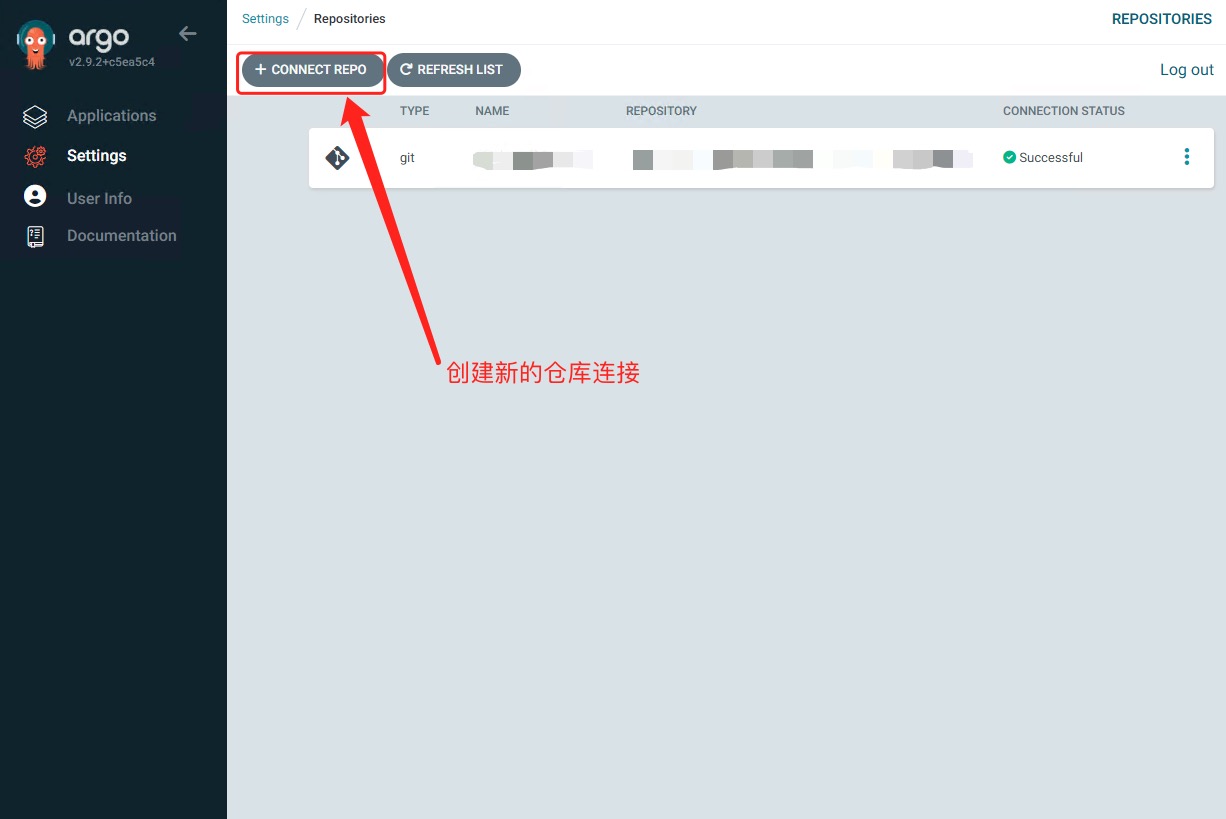
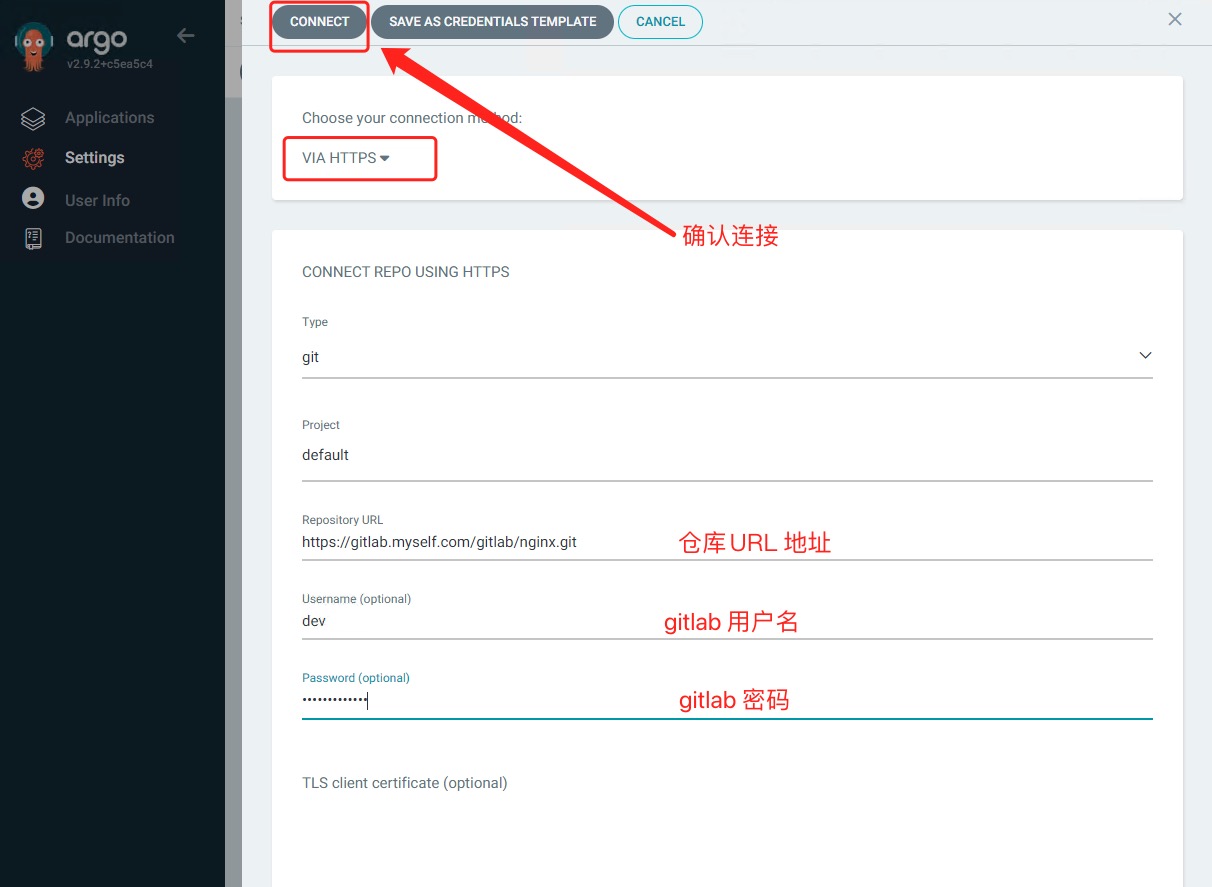
部署服务
创建yaml文件
我提前在代码仓库写好了nginx的yaml文件deployment.yaml
apiVersion: apps/v1 #与k8s集群版本有关,使用 kubectl api-versions 即可查看当前集群支持的版本
kind: Deployment #该配置的类型,我们使用的是 Deployment
metadata: #译名为元数据,即 Deployment 的一些基本属性和信息
name: nginx-deployment #Deployment 的名称
labels: #标签,可以灵活定位一个或多个资源,其中key和value均可自定义,可以定义多组,目前不需要理解
app: nginx #为该Deployment设置key为app,value为nginx的标签
spec: #这是关于该Deployment的描述,可以理解为你期待该Deployment在k8s中如何使用
replicas: 1 #使用该Deployment创建一个应用程序实例
selector: #标签选择器,与上面的标签共同作用,目前不需要理解
matchLabels: #选择包含标签app:nginx的资源
app: nginx
template: #这是选择或创建的Pod的模板
metadata: #Pod的元数据
labels: #Pod的标签,上面的selector即选择包含标签app:nginx的Pod
app: nginx
spec: #期望Pod实现的功能(即在pod中部署)
containers: #生成container,与docker中的container是同一种
- name: nginx #container的名称
image: nginx:1.7.9 #使用镜像nginx:1.7.9创建container,该container默认80访问
livenessProbe: # 存活探针检测
httpGet:
path: /nginx_status
port: 80
scheme: HTTP
timeoutSeconds: 1
periodSeconds: 10
successThreshold: 1
failureThreshold: 3
readinessProbe: # 就绪探针检测
httpGet:
path: /nginx_status
port: 80
scheme: HTTP
timeoutSeconds: 1
periodSeconds: 10
successThreshold: 1
failureThreshold: 3
startupProbe: # 启动探针检测
httpGet:
path: /nginx_status
port: 80
scheme: HTTP
timeoutSeconds: 1
periodSeconds: 10
successThreshold: 1
failureThreshold: 3
svc.yaml
apiVersion: v1
kind: Service
metadata:
name: nginx-service #Service 的名称
labels: #Service 自己的标签
app: nginx #为该 Service 设置 key 为 app,value 为 nginx 的标签
spec: #这是关于该 Service 的定义,描述了 Service 如何选择 Pod,如何被访问
selector: #标签选择器
app: nginx #选择包含标签 app:nginx 的 Pod
ports:
- name: nginx-port #端口的名字
protocol: TCP #协议类型 TCP/UDP
port: 80 #集群内的其他容器组可通过 80 端口访问 Service
nodePort: 32600 #通过任意节点的 32600 端口访问 Service
targetPort: 80 #将请求转发到匹配 Pod 的 80 端口
type: NodePort #Serive的类型,ClusterIP/NodePort/LoaderBalancer
创建app
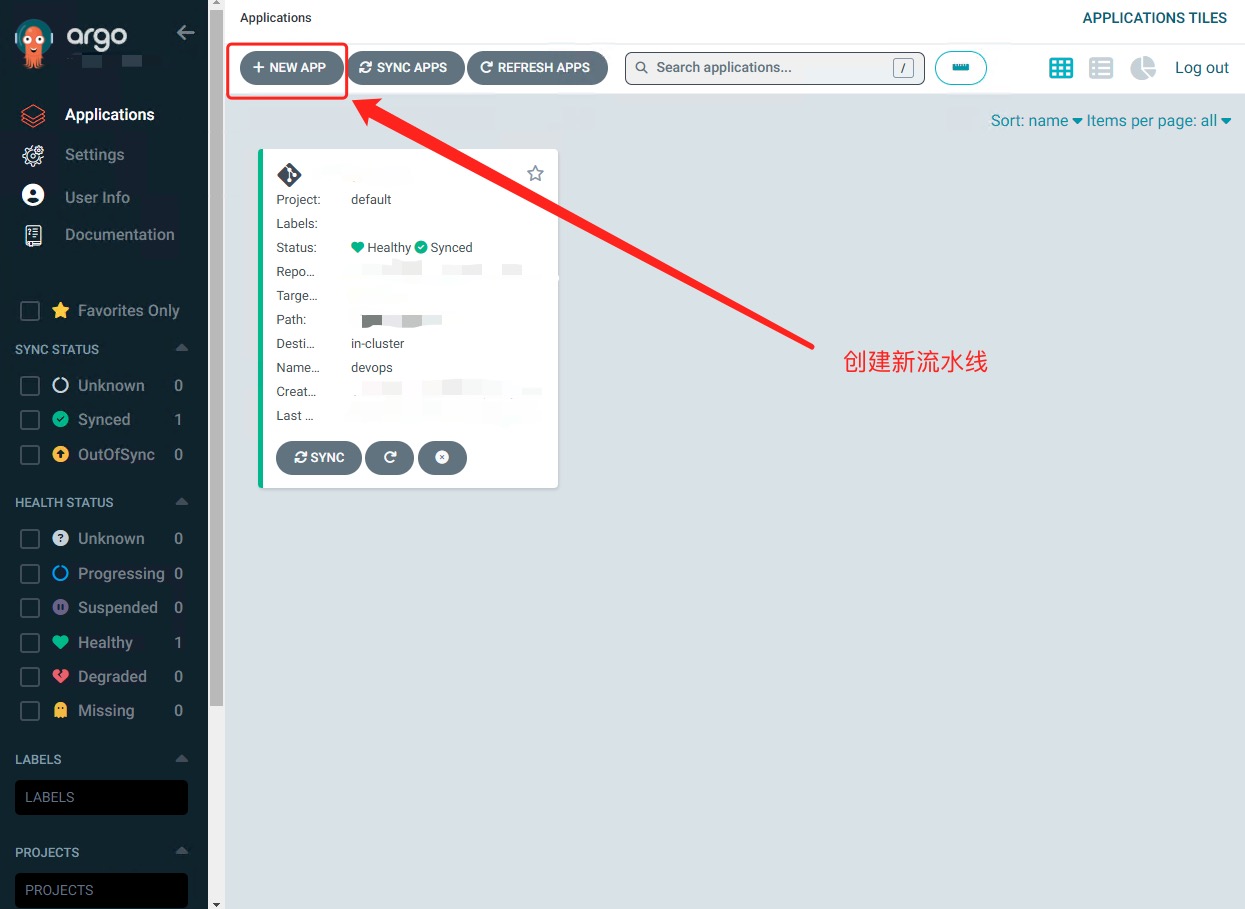
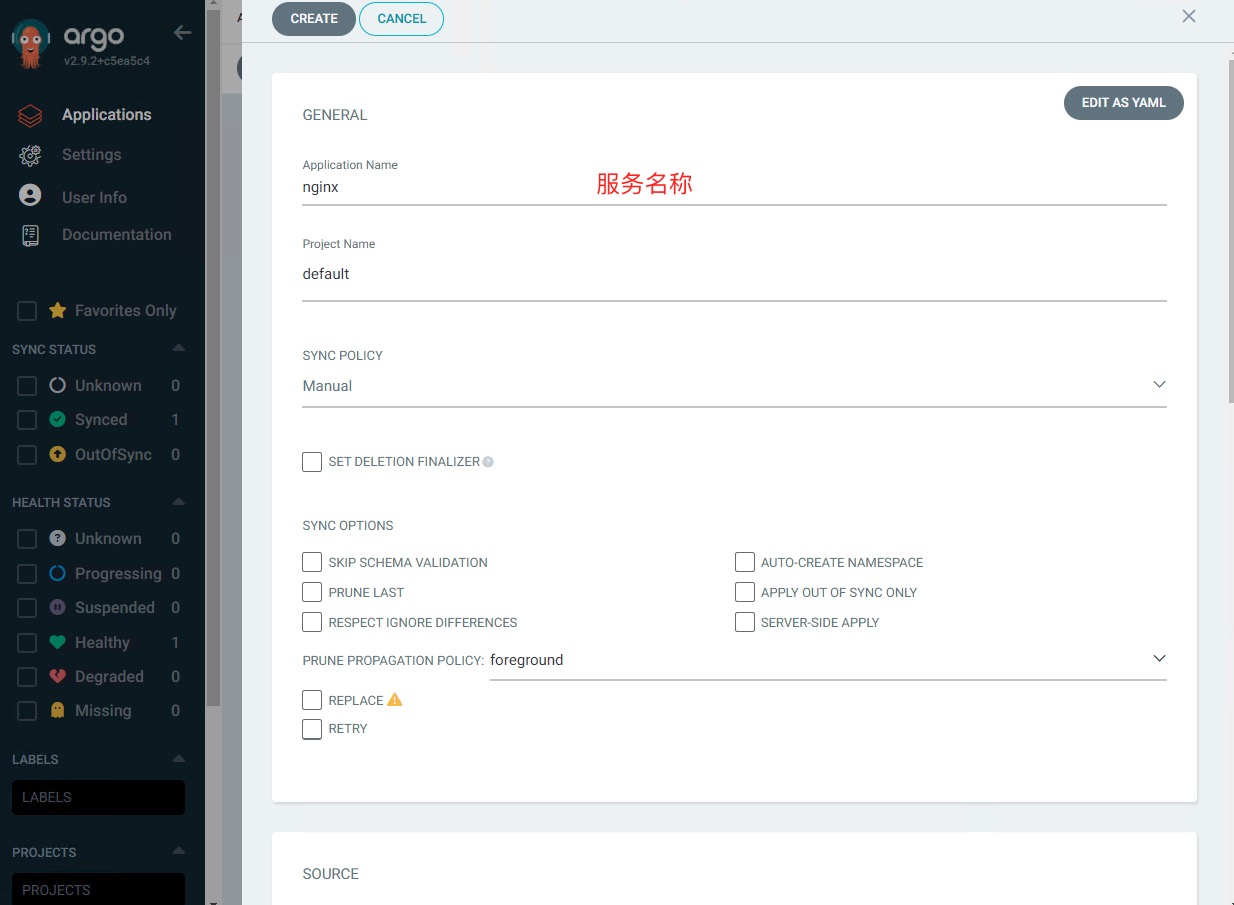
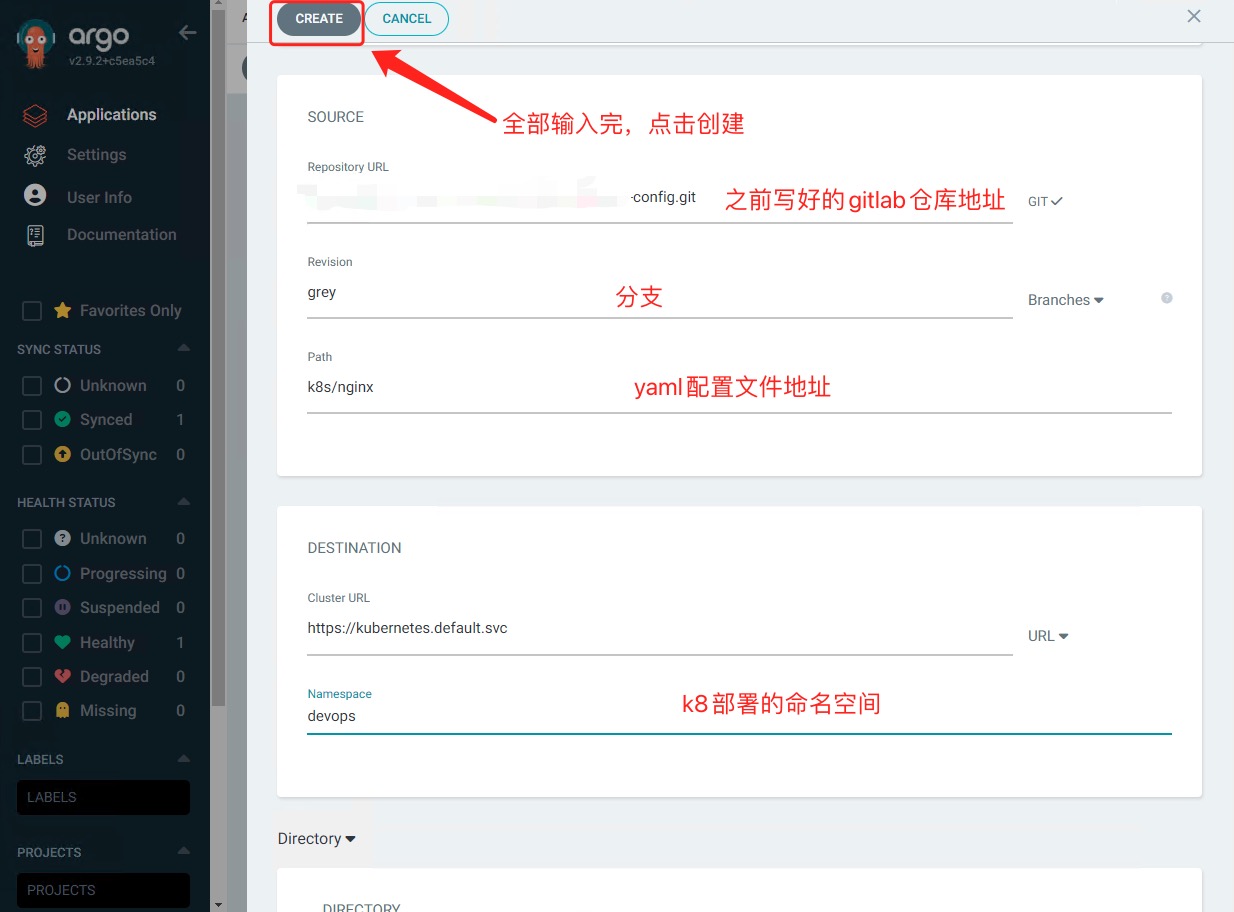
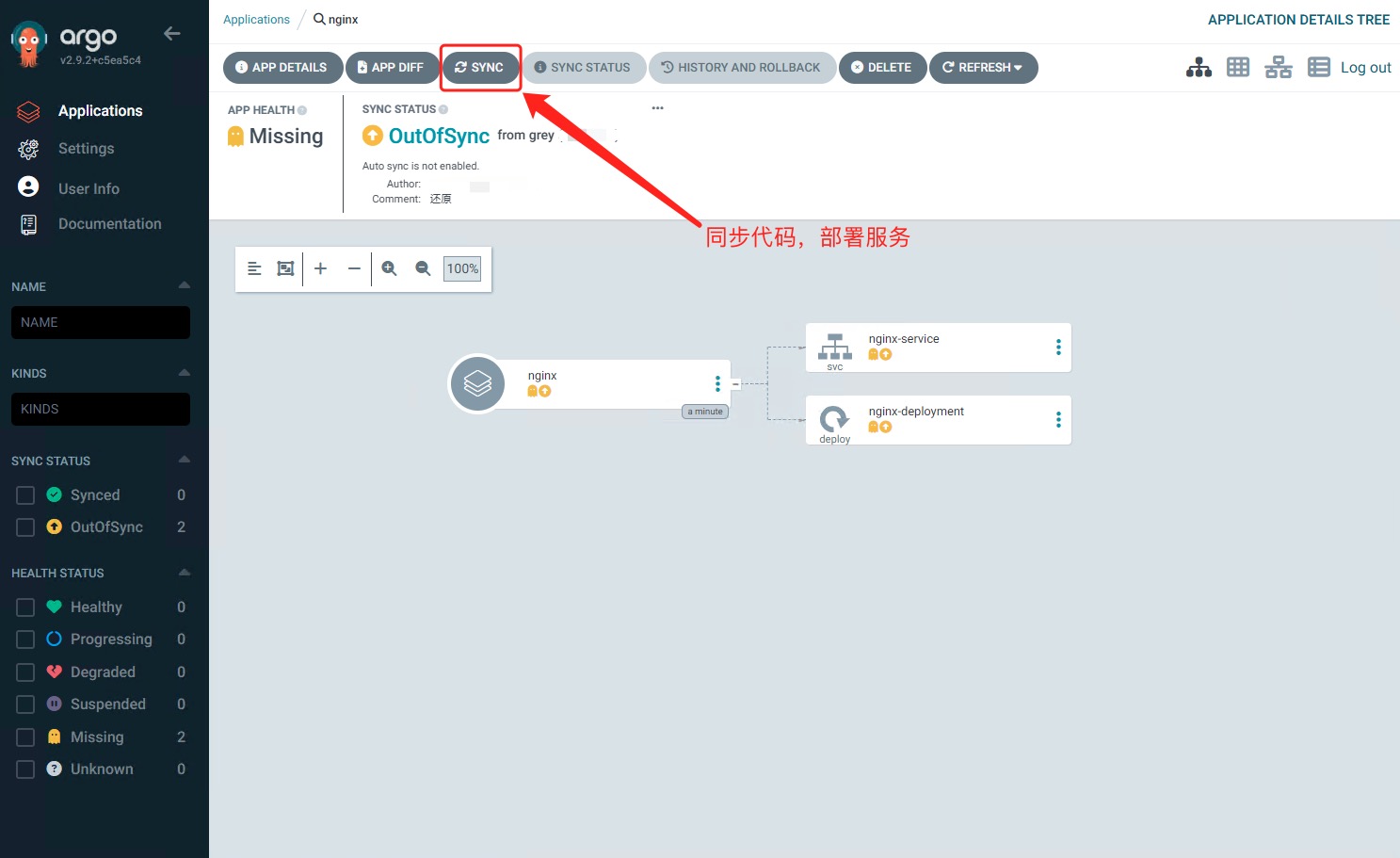
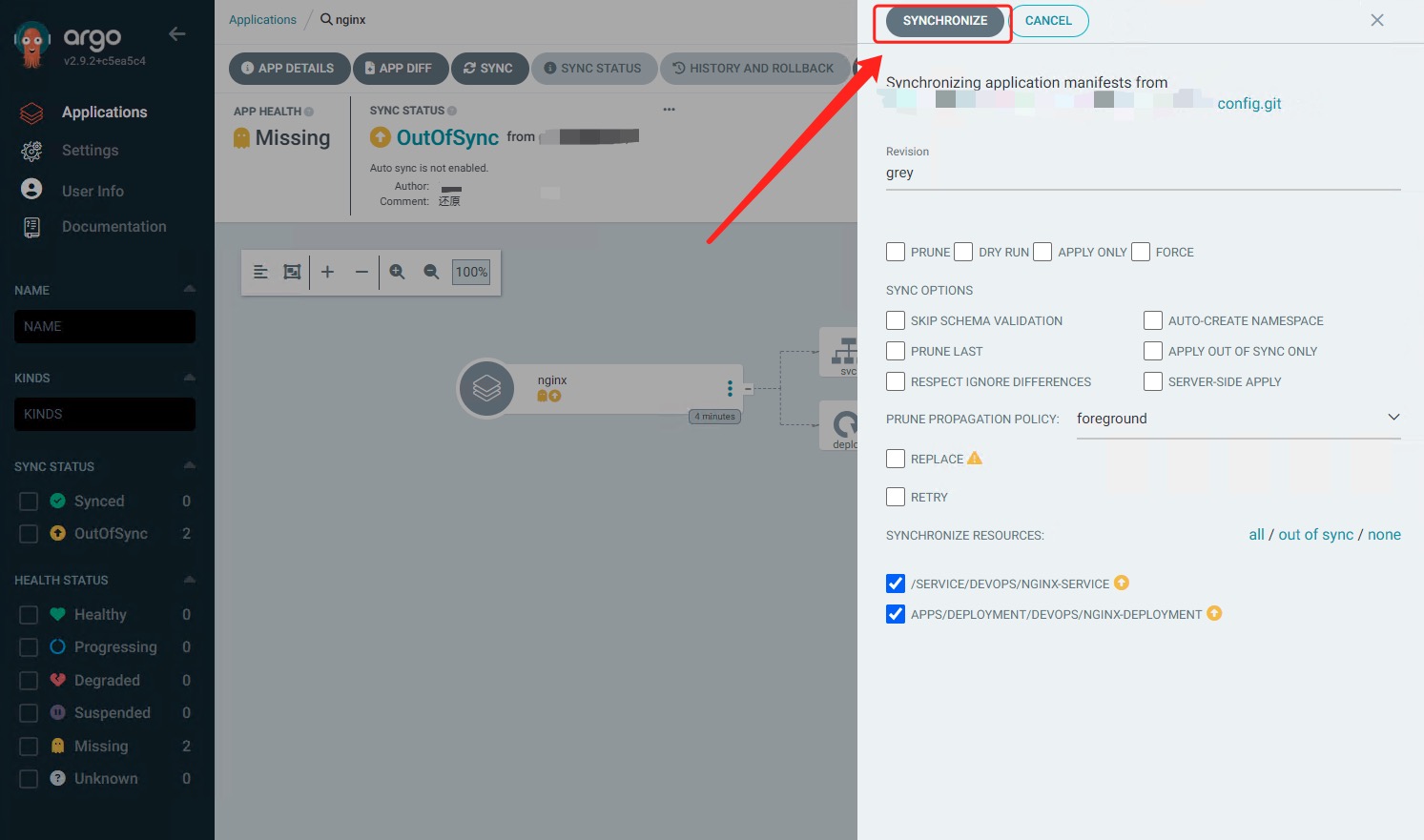
部署成功
